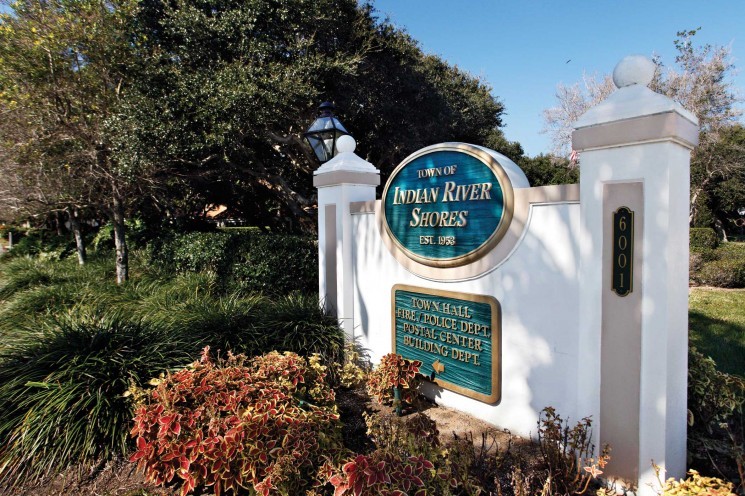
The Shores Town Council last week signed off on a proposal to divide a 5.4-acre oceanside parcel into three 1.6-acre homesites, but Mayor Brian Barefoot and his four colleagues still need to decide if and how they should reduce the permitted density from the current five units per acre, and how to address neighboring residents’ cries for beach access through the property.
They got some guidance on the second question on Monday when the town’s planning and zoning board voted unanimously to recommend the Town set aside a 5-foot-wide walkway to honor the decades-long use of the property as beach access for residents who live west of A1A.
Auctioneer Wesley Davis pitched the idea to the Town Council of taking the parcel, which was historically divided into two lots – one with all the oceanside frontage, and one with all the A1A frontage – and reconfiguring it as three deep lots, each having both A1A and oceanside frontage.
He and Town Attorney Chester Clem explained that the Town could opt for an access easement on the southernmost lot, or set aside a swath of land five or more feet wide to be owned and maintained by the Town for public beach access.
Town Manager Robbie Stabe tried to clear up some misconceptions about the options. “If we’re talking about an easement, that’s simply an allowance for people to use that person’s property [for beach access],” he said.
Stabe also said residents should not get over-excited thinking that 25 or 30 units might be constructed on the property. He explained that any developer would not only be subject to the Town’s strict setback, landscaping, buffer and water retention requirements, but that the Florida Department of Transportation would also require a traffic study.
He said there would be many public hearings on any proposed development, with plenty of changes for neighbors to view the plans and weigh in.
Despite those comforting words, P&Z Board Member Linda Bolton said she still had major worries about high-density, multi-family buildings going up on that property if the Town Council takes a pass on stiffening up the zoning in hopes of fetching a higher price at auction.
The property will be sold in the real estate equivalent of a three-dimensional chess game. Potential buyers can bid on a single home site, two home sites or the entire property.
If the lots are sold individually early in the auction, there will be a second layer to the process in which bidders can vie to buy two lots for a single price or to purchase the entire property. If the combo bid is higher than the total of the separate lot bids, it will trump the earlier winning bids. Thus, there could be one, two or three winning bidders and someone who is high-bidder on one of the initial single-lot sales could go home emptyhanded.
If a single buyer ends up with the entire property, the prospect of dense, multifamily use would be more likely.
Shores residents – who initially wanted the parcel turned into a park but realized they’d lost that battle – packed the council chambers Monday afternoon for the Planning, Zoning and Variance Board meeting to advocate for low density and beach access. Most of the members of the Town Council were also in attendance, just to observe.
When a stream of passionate Shores residents spoke urging the board to take definitive action on the beach access, Clem briefed the board on the parameters of their advisory power. “If you want to give input you can, but these are obviously issues for the Town Council,” Clem said. “What you can do is make recommendations to the council.”
Linda Schlitt-Gonzalez, whose parents, developers Ed and Marguerite Schlitt, sold Indian River County the property at a deep discount in the early 1980s with the understanding that residents of their Pebble Bay and Pebble Beach Villas developments could traverse the property to get to the beach, said she’s increasingly concerned about all the oceanfront development.
Gonzalez said she’s skeptical that three buyers would pay big bucks for the lots to build single-family homes; instead the land would probably sell to a developer if the density restrictions made the numbers work. “Or maybe someone will purchase it for a private compound. You can’t find that large of a property on the beach anywhere else. The only thing is they would be backing right up to a public beach, not a private beach.”
When the parcel was acquired by the Shores in a land swap in 1993, no deed restrictions providing for the beach access were passed along, but for decades the Town allowed casual use of the parcel for beach access. It was fenced off, but with an open gate and a well-worn footpath to the ocean.



